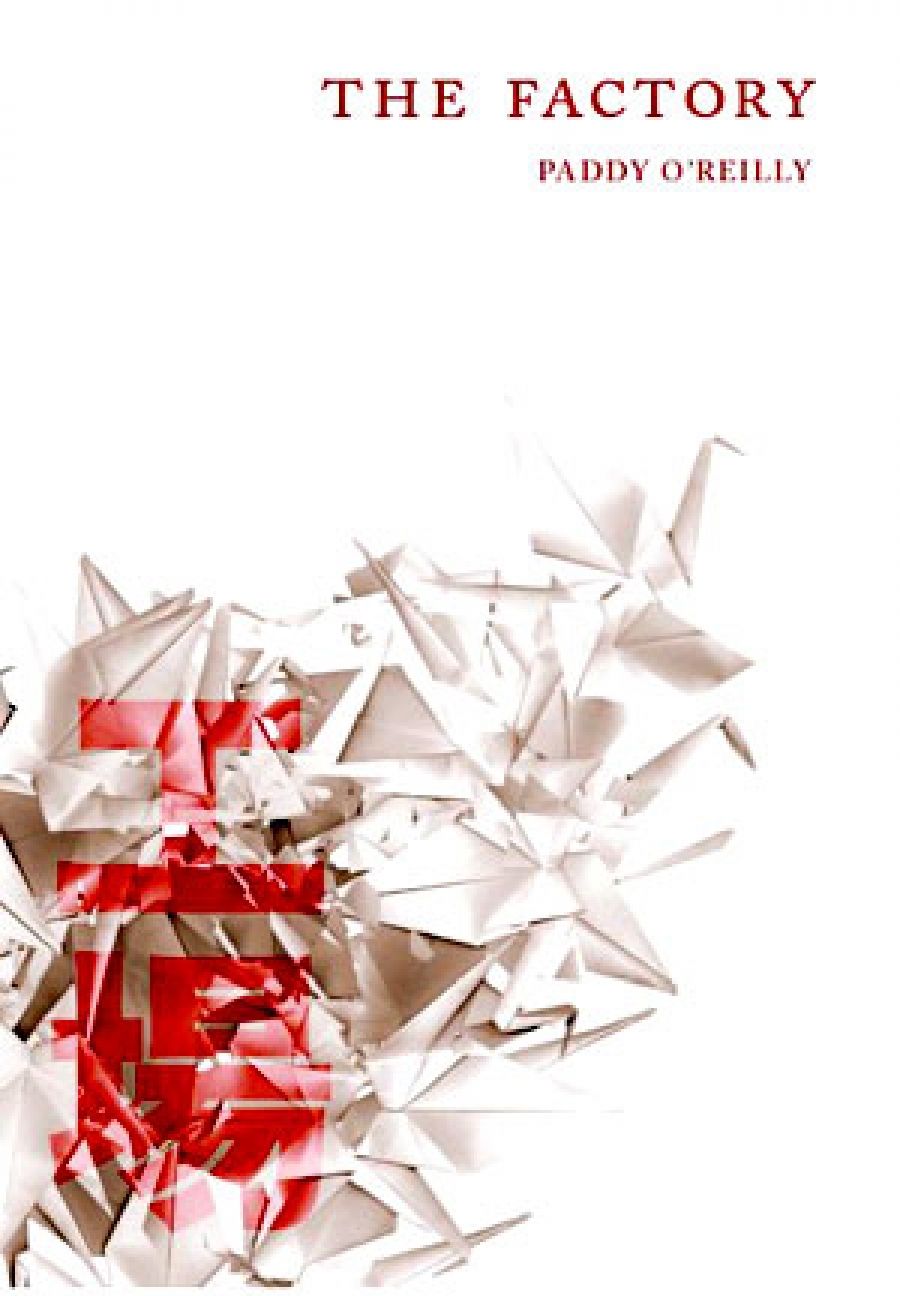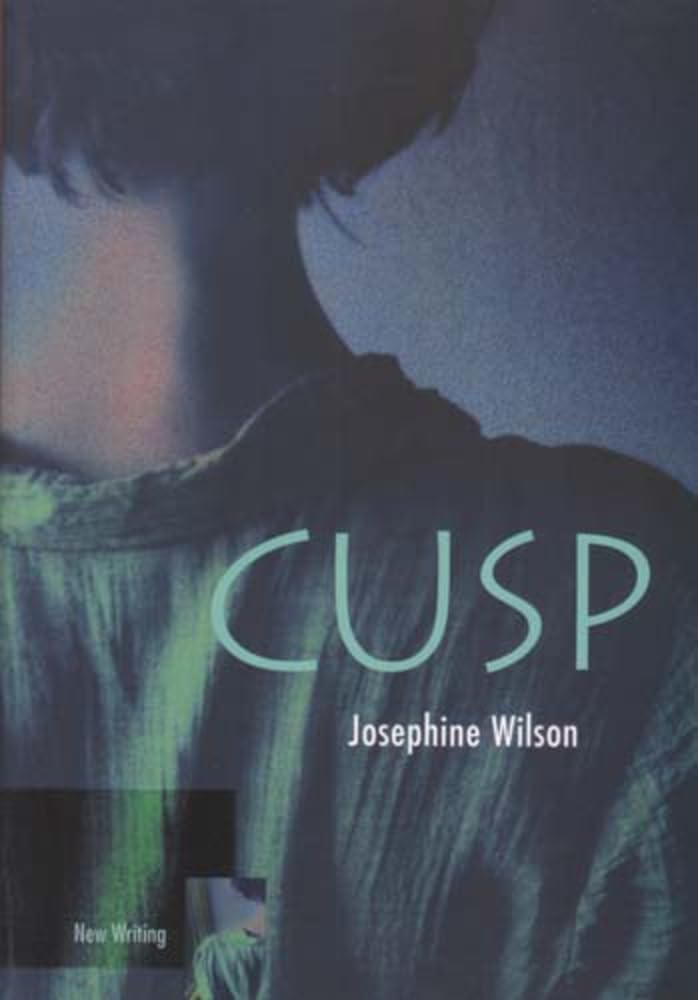
- Free Article: No
- Contents Category: Fiction
- Review Article: Yes
- Article Title: On the cusp
- Online Only: No
- Custom Highlight Text:
While the imminent demise of the Australian novel continues to be predicted in the pages of the nation’s broadsheets, a curious thing is happening: two Australian publishing houses are creating new fiction lists. Australian Scholarly Publishing will present its fiction titles under the imprint Thompson Walker, and the University of Western Australia Press has come up with a New Writing series to showcase work from the postgraduate creative writing programmes of Australian universities.
- Book 1 Title: The Factory
- Book 1 Biblio: Thompson Walker, $21.95 pb, 255 pp
- Book 1 Cover Small (400 x 600):

- Book 1 Cover (800 x 1200):

- Book 2 Title: Cusp
- Book 2 Biblio: UWA Press, $22.95 pb, 250 pp
- Book 2 Cover Small (400 x 600):

- Book 2 Cover (800 x 1200):

The Factory, a novel by Paddy O’Reilly, is the opening gambit for Thompson Walker, while University of Western Australia Press has launched its series with two novels: Josephine Wilson’s Cusp and Annabel Smith’s A New Map of the Universe. Each richly deserves to reach an audience.
A tightly structured novel written in crisp, spare prose, The Factory is the story of Hilda, an Australian PhD candidate, who travels to Japan to research the infamous arts cooperative Koba, which had enjoyed a brief flowering twenty years earlier. The Koba dream had been to conserve and reinvigorate the traditional Japanese arts, but its isolated and tight-knit community fell apart following the mysterious death of one of its young members. Hilda, fluent in Japanese and sensitive to the cultural mores of her host country, begins by interviewing those original Koba members who are still alive and willing to speak to her. She soon discovers that Koba’s mastermind and taskmaster, Yasuda, is planning to reconstitute Koba in the present, and learns that he will only provide her with the historical information she needs to complete her research if she agrees to document his current venture, glowingly.
From early in the piece, the reader knows that Hilda’s excavation of Koba’s past has somehow led to her incarceration in a Japanese jail. It is from within the jail’s brutal confines that she sets down her version of events; the jail scenes are written with a particularly chilling, stripped-back simplicity. It is difficult to imagine, in the opening pages, how Hilda’s well-mannered and carefully constructed interviews could possibly have led her into such dangerous territory, and O’Reilly skilfully sustains the narrative tension of this question through to the novel’s resolution.
In the book’s first part, Hilda’s story is interwoven with the conflicting and fascinating accounts of the original Koba members, and here we find some of the most compelling material. There are Kanno and Mari, the ‘plodders’ of the group, who have nothing but praise for the cooperative. There is Yumi, who was the lover of the man who died, and whose version of the original Koba is a tale of exploitation and abuse. And there is Keiko, a fascinating character who holds the key to understanding the group’s unravelling.
The latter part of the novel focuses on Hilda’s story, and on her experience of the new Koba, one that she shares with her bold and attractive friend Eloise, and a young Japanese man called Nao, who has his own covert reasons for infiltrating the new cooperative. Perhaps O’Reilly’s point is that it is not possible for the second Koba to match the mystique and intrigue of the first, but the strength of the material concerning the original Koba is such that it somewhat overshadows the contemporary narrative and creates a slightly disappointing imbalance between the temporal threads of the novel.
In many ways, Josephine Wilson’s Cusp is a more typical first novel: a girl’s coming-of-age yarn set in Wilson’s home town of Perth, and in the squats, galleries and grotty streets of New York. However, it’s the début of a wonderful dramatist and storyteller, and the idiosyncratic voices of the daughter and mother protagonists, Lena and Mavis Hawkins, capture attention from the outset and hold it through to the novel’s last, moving page.
Lena – born on an astrological cusp and seemingly confined to a kind of directionless no man’s land – comes home to Perth from New York, believing that during her time away she had finally shed the skins of an ungainly childhood and insecure adolescence. Waiting for her at the airport is her mother Mavis, who has a lifetime’s worth of experience in waiting, and who has a secret she doesn’t know how to share. Switching between the voices of Lena and Mavis, Cusp charts the complexity of the mother–daughter bond, both pinpointing the moments of connection and illuminating the wide open spaces of misunderstanding, with humour, grace and whimsy. While Wilson depicts scenes of irritation and conflict with almost painful honesty, she is equally able to allow a deep sense of love to transcend the bickering. As Lena learns, when she shares a dark story with a therapist who will not listen to the detail, it is precisely the detail that matters. It is in the detail that one can put a distinctive stamp on an ordinary life, and it is in the detail that the greatest pleasures of this novel lie.
Wilson does dialogue brilliantly – a scene from a bizarre New York restaurant is memorable – and almost every page of Cusp offers a phrase or an image to savour: ‘It seemed she was not so much returning as going backwards, like an eraser over pencil, effacing everything she had become’; or, ‘Lena’s hand shot up as if to catch the falling star. Mavis closed her eyes and saw it crashing onto her palm and skidding down her daughter’s lifeline.’
Wilson says that her next novel will have something to do with the objects revered in museums. This will be one to look out for, since Cusp is infused with a knowing, contemporary take on art, and contains much interesting rumination on the small margin (cusp?) that separates object from artefact.


Comments powered by CComment